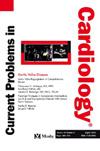心房分流器在心力衰竭患者中的安全性和有效性:系统回顾和荟萃分析
IF 3.3
3区 医学
Q2 CARDIAC & CARDIOVASCULAR SYSTEMS
引用次数: 0
摘要
关于心房分流器(ASD)的数据有限,这使得为心力衰竭(HF)患者提供明确的建议具有挑战性。我们进行了荟萃回归分析,以确定可能从该设备中获得更大益处的个体。方法检索PubMed、EMBASE和Cochrane数据库,纳入8项研究进行meta分析。估计终点采用随机效应比例荟萃分析得出。此外,进行meta回归分析以阐明关键协变量对这些终点的潜在影响。结果共纳入522例患者。汇总分析显示,ASD患者的估计死亡率为1.9%。此外,仍处于NYHA III至IV期的患者比例降至22.5%。此外,6分钟步行距离(6MWD)提高了35.1米,KCCQ得分提高了16.2分。meta回归分析显示,NYHA III至IV状态与年龄(β= 2.799)、高血压(β= 0.782)、糖尿病(β= 0.951)、心房颤动(β= 0.778)呈正相关。高血压和高水平的左室射血分数(LVEF)与6MWD和KCCQ评分改善较少相关,而较高的NT-proBNP水平与6MWD和KCCQ评分改善较好相关。结论ssd是心衰患者缓解症状的安全选择。具体来说,EF降低或NT-proBNP水平升高的个体,没有合并高血压、糖尿病或心房颤动,似乎可以获得更实质性的症状缓解。本文章由计算机程序翻译,如有差异,请以英文原文为准。
Safety and effectiveness after atrial shunt device in patients with heart failure:A systematic review and Meta-Analysis
Background
Limited data are available regarding the atrial shunt device (ASD), making it challenging to provide definitive recommendations for patients with heart failure (HF). We conducted a meta-regression analysis to identify individuals who may derive greater benefit from this device.
Methods
We conducted a search across PubMed, EMBASE, and Cochrane databases, including 8 studies for meta-analysis. Estimated endpoints were derived using random-effects proportional meta-analysis. Additionally, meta-regression analysis was performed to elucidate the potential impact of key covariates on these endpoints.
Results
A total of 522 patients were included. The pooled analysis revealed an estimated mortality rate of 1.9 % for patients who underwent ASD. Additionally, the proportion of patients who remained in NYHA III to IV was reduced to 22.5 %. Furthermore, there was an improvement of 35.1 meters in the 6-minute walk distance (6MWD) and a 16.2-point improvement in the KCCQ score. Meta-regression analysis indicated that NYHA III to IV status was found to be directly proportional to age (β= 2.799), hypertension (β= 0.782), diabetes (β= 0.951), and atrial fibrillation (β= 0.778). Hypertension and a high level of left ventricular ejection fraction (LVEF) were associated with less improvement in 6MWD and KCCQ score, whereas a higher NT-proBNP level was associated with better improvement in 6MWD and KCCQ score.
Conclusions
ASD emerges as a safe choice for HF patients aiming to alleviate symptoms. Specifically, individuals with reduced EF or elevated NT-proBNP levels, and without concomitant hypertension, diabetes, or atrial fibrillation, appear to achieve more substantial symptom relief.
求助全文
通过发布文献求助,成功后即可免费获取论文全文。
去求助
来源期刊

Current Problems in Cardiology
医学-心血管系统
CiteScore
4.80
自引率
2.40%
发文量
392
审稿时长
6 days
期刊介绍:
Under the editorial leadership of noted cardiologist Dr. Hector O. Ventura, Current Problems in Cardiology provides focused, comprehensive coverage of important clinical topics in cardiology. Each monthly issues, addresses a selected clinical problem or condition, including pathophysiology, invasive and noninvasive diagnosis, drug therapy, surgical management, and rehabilitation; or explores the clinical applications of a diagnostic modality or a particular category of drugs. Critical commentary from the distinguished editorial board accompanies each monograph, providing readers with additional insights. An extensive bibliography in each issue saves hours of library research.
 求助内容:
求助内容: 应助结果提醒方式:
应助结果提醒方式:


